Stable Diffusion is an AI model that generates images based on textual descriptions and is probably the most adequate among any other models as we can imagine. Perhaps whether you are a beginner or an experienced user, if proper guides are provided, it will not be hard to work with Stable diffusion.
You are lucky to be here as this blog will help you reach this target by providing every detail step by step, starting from the necessary software to your first picture creation. So, let’s go and find out how to use stable diffusion via online or locally.



How does Stable Diffusion work?
A stable diffusion model is needed in the area of artificial intelligence and machine learning techniques, particularly image generation models. It can be referred to as remodeling the solution in a gradual manner over time starting from random window noise to the actual image generation.
The procedure is called “stable” since the system that is formulated, is designed with the aim of working systematically. The processes have a stable framework in terms of how relevant answers are to be generated from foreseen questions. Hopefully, you may be curious to know how stable diffusion works, so let’s move toward the stable diffusion guide.
Step 1. Initialization.
Firstly, some random noise or any initial guess is used to create your desired image.
Step 2. Iteration refinement.
In a gradual manner the model organizes this prompt through several steps over many iterations performed. An iteration consists of a small beat (a step), where the noise is gradually eliminated and an image is created.
Step 3. Convergence.
As the iterations proceed, the image generated improves until the most likely enhancement is attained. This is achieved with the help of the diffusion process, in which all the modifications applied at a certain stage are introduced gradually.
Step 4. Guidance by data.
The model relies on training data to diffuse and embed these counts into it. This permits the model to grasp how a reasonable result should appear and as such increases the prospects of a successful and appropriate output.
Step 5. Final output.
Eventually, the end image is the one presented to the user after a few rounds of bottling and smoothing out the edges. This final image is a clearer and closer representation of what is being assumed.



How to use Stable Diffusion online?
Nowadays stable diffusion is extensively utilized in the field of AI in the enhancement and generation of images. Similarly, it finds use in advanced modeling of liquids, where enhancement of the output over time is achieved. So, let’s see how to use stable diffusion online!
Step 1. Choose an online platform.
First of all, it is imperative to look for an online place where you are able to find stable diffusion. In fact, many such applications and websites offer these facilities for the very same reason using the web’s usability most of the time.



Step 2. Upload or select initial input.
After you choose a platform, you should upload an image as a sample to give input. Alternatively, you can also use a text prompt for the same purpose or to start off.
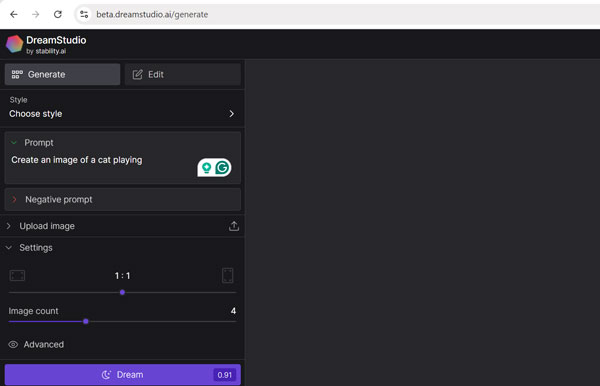


Step 3. Adjust parameters.
Most of the platforms allow you to tweak a few parameters such as the number of iterations, the diffusion rate, and other related parameters in the generation image process. So go on and set these as per your requirements.
Step 4. Generating an image.
After setting the parameters, click the ‘start’ or ‘generate’ button, whichever one applies. The system will then commence the heavy-duty work of improving the diffuse image, so to say, the progressive cycles will begin.



Step 5. Downloading the final image.
Finally, the system will generate the image that corresponds to your prompt and will let you download or even share it with others.
How to use Stable Diffusion locally?
In order to be able to utilize Stable Diffusion without having an internet connection, certain apps will need to be downloaded and installed on your desktop. This guide will take you through that, and there will be pictures for easy following.
Step 1. Install python and git.
- First, you have to download and install python in your system because it is the language to be used.



- Then you need to have the predecessor known as Git in order to manage many code editions.
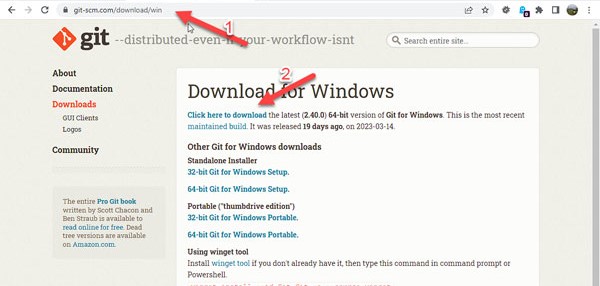


Step 2. Clone the Stable Diffusion repository.
- Now, go to the local disk D, create a new folder, and name it Stable Diffusion AI. This is done in order to pull the Stable Diffusion WebUI from GitHub. Besides, this folder will also house your training models.



- Now after creating the stable diffusion directory, right-click on this folder and select Git Bash Here, which is installed with Git on Windows. This will engage the command line and assist you in customizing the depository.



- So, type the command: git clone https://github.com/CompVis/stable-diffusion.git to clone your stable diffusion repository.



Step 3. Get your required dependencies
Go to your Stable Diffusion directory and use a package manager such as pip: pip install -r requirements.txt
Step 4. Get the pre-trained models.
- Stable diffusion software necessitates the use of pre-trained models to create images.
- Go to the website Stable Diffusion AI’s original checkpoint and here you will see sd-v1-4.chkp. Just click on it to download.



- Now, copy this file and put it in the Stable Diffusion directory, usually under the models folder of your cloned repository.



Deploy Stable Diffusion on your local computer
Step 5. By following the above-mentioned step-wise guidance, it is possible to deploy stable diffusion locally.
- Navigate the ‘Stable Diffusion AI’ directory > right-click web-user.bat file > click on edit to get notepad > you write code/git pull > ‘file’ place above will help to save this.



- Now, please double-click the web user.bat file and a command prompt will show up. It automatically starts downloading the PyTorch, which is the complete structure for machine learning purposes.



- This is the most critical step as the setup will not be finalized until you see the command-line interface below. This will ensure that you have run it locally.
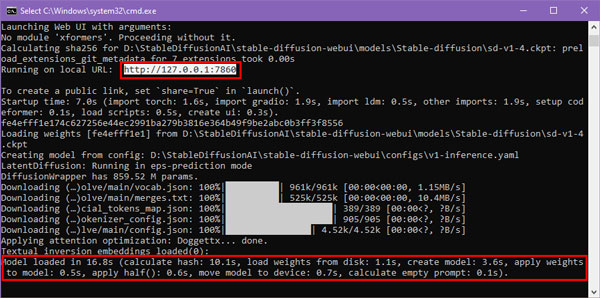


Step 6. Generate an image and save.
Now, scroll down the command line interface, and you will see Running on Local: … and also there is an IP address placed before it. Click on that IP address and type in the web browser. That’s it! An image can be created even while a prompt is given.



How to use Stable Diffusion for NSFW?
Since its inception, stable diffusion has actively generated AI art while also having the potential to create trouble. Here is a summary on how to create stable diffusion NSFW while not violating the law and basic ethical standards.
Step 1. Familiarize yourself with the terms and conditions.
This is useful, especially in situations where stable diffusion is most commonly employed for NSFW content creation. It should be noted that there should be a clear strategy on how to utilize adult content. Most services will post such disclaimer or limitation somewhere, therefore, ensure you conform to the service parameters within such frameworks.
Step 2. Set up and necessary configurations.
- It is wise to create NSFW content in the model first. So, go to the Dreamshayper website and search for the image you wish to download.



- Now, open your Stable diffusion directory and paste the downloaded file here.



- Open the Stable diffusion WebUI, click on the checkpoint button located on the top left of the screen, and a pop-up box will come out. Yes, at this point you simply have to click on the model called Dreamshaper.
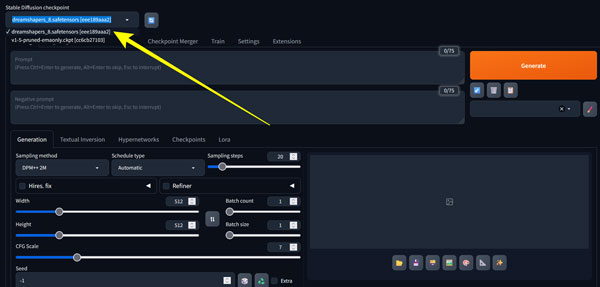


Step 3. Choose suitable prompts.
Choose appropriate Prompts when it comes to modeling NSFW content, it is crucial to be mindful of the prompts in order to be able to realize the desired results. Moreover, try to add a full comprehensive prompt including styling and everything you wish to include.



How to train Stable Diffusion?
Training stable diffusion means correction of a model for a specific purpose or task. Below is a short tutorial detailing the proper techniques used for stable diffusion training.
Step 1. Collection and processing of data.
Obtain an adequate dataset and scrub it to ensure it meets the requirements. You also need to sort the data according to how you intend to use it in training.
Step 2. Install dependencies.
Before you create a training method using the Stable Diffusion method, you should install its all dependencies. To do this, the following command is needed to install smoking libraries: pip install torch torch-vision transformers.
Step 3. Adapt the training parameters.
Prepare a configuration file that mentions the learning rate, batch size, and epoch numbers. These need to be optimized for the dataset and your goal type.
Step 4. Start training.
Use your configuration file to execute the training script. The command may look like this. Python train.py –config config. yaml. Keep track of the training process to ensure it occurs as intended.



Step 5. Test and tune.
Test the model performance on validation data after training. If results are not satisfactory make necessary changes in model parameters. Last but not least, reduce overfitting through careful tuning and optimize model accuracy.
Step 6. Save and deploy.
Quickly save the trained model weights once you feel that the obtained results are satisfactory. Developers can deploy the model using a deployment framework or an API to carry out all the activities of inference and integration.
How to update Stable Diffusion?
An update of Stable Diffusion means getting new features, improvements, and bug fixes. So, let’s learn how to update it!
Step 1. First of all, you need to back up your all data including models or other custom files. This step will prevent you from any data loss in case of any issue.
Step 2. Now, open the file explorer in your windows and go for your stable diffusion directory. Click on the folder path at the top.
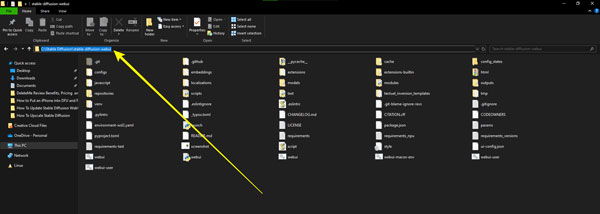


Step 3. Then, backspace the folder path and type cmd. You will see the following interface if you have done it right.
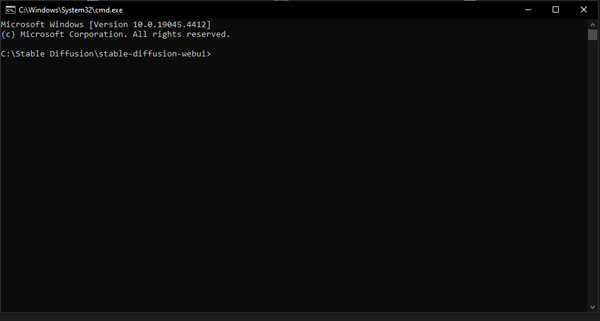


Step 4. Finally type git pull in the command prompt. That’s it! Your Stable diffusion will be updated.



What do parents think of Stable Diffusion?
Parents disagree on the idea of Stable Diffusion, more so in the matter of using it in coming up with AI content. Although stable diffusion has useful features in the generation of art and other creative works, fear of using it in generating “stable diffusion AI porn” associated dangers of the technology has generated a great panic.
- Concerns about AI-Generated content risks
Stable Diffusion not only fails to implement parental restrictions, but it also likely exposes children to inappropriate content that could be created using Stable Diffusion. This viewpoint might further raise the risk of children’s development in the internet world as explicit content might exploit younger minds.
So, parents must have to think of a reliable solution. Luckily, FlashGet Kids proves a one-stop solution for ensuring a healthier environment for kids.
Protecting children using FlashGet Kids
“FlashGet Kids is highly reliable third-party software allowing parents to protect their kids from internet toxicity.”
In order to shield the children from exposure to inappropriate content, the ability to use FlashGet Kids can be taken advantage of. This full-fledged program offers extensive features for limiting and monitoring a child’s use of the Internet. Let’s go into its details:
- Activity Report: FlashGet Kids provides data on the apps and the sites that your children have visited. It also informs how much time has been spent by your kids on specific apps.
- Screen mirroring: By using this feature you are able to observe what your children are doing on their device at that very moment.
- Keyword Detection: It makes it possible for you to create a word list containing words related to such areas as adult sites. However, if children visit pages containing such content then no pages will appear.
- Screen time management: The duration in which children will remain on online activities is regulated and managed accordingly by making use of FlashGet Kids.
Teach children
It is also necessary to explain to a child the potentialities of the Internet as well as the rules of conduct therein. Such discussions should also explain to parents the safety practices of children online and the need to warn children about the threat posed by AI tools.
It is anticipated that the application of tools like FlashGet Kids, along with proactive parents’ involvement against stable diffusion AI porn will enhance parents’ capability to protect their children against online harm.
Conclusion
In conclusion, you can easily use the Stable Diffusion to create enhanced images according to your needs and requirements. You can also use this AI model online or locally using our above-mentioned guidelines. It also enables you to create NSFW content. This is a concerning point for parents. By using these platforms kids might be exposed to pornographic content which is not suitable for their age. That’s why it’s advisable to install FlashGet Kids to ensure a healthy digital room for your kids.

